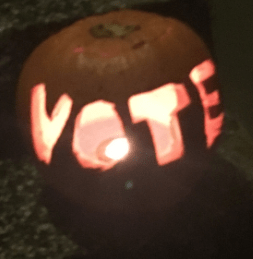
How well do you fulfill your would-be supporters wishes?
Believe it or not, this guest post appeared originally on my blog 3 1/2 years ago. I happened on it today, and thought it was still appropriate so wanted to share. One of my Clairification School students, Matt Patchell, had begun an important discussion in our online Subscriber Forum about what he termed the current “digital divide.”
He was referring to the chasm between nonprofits who are facing the digital revolution head-on, adapting their strategies to embrace its’ opportunities, vs. those sticking their heads in the sand and hoping it will go away.
Folks, digital engagement is not going away. Rather, it’s exploding.
As of late last year, one study found 43% of U.S. adults get political news online, rather than via television, radio or print media. A report from the Pew Research Center found one in five Americans get their news from Facebook. For the first time in the Center’s surveys, more than half (55%) of Americans age 50 or older report getting news on social media sites. That is 10 percentage points higher than the 45% who said so in the previous year. And that report is now three years old!
If you continue to ignore the channels your supporters frequent, and the ways they prefer to receive their information, the only thing that will be going bye-bye are your supporters.
What digital means for nonprofits.
It’s a sea change in how your marketing and fundraising team(s) operate and cooperate. Adopting is a far cry from adapting.
What does this have to do with Trump?
His election in 2016 proved to be an engagement catalyst for many would-be supporters.
Matt wrote post-Trump, if you will, not because nonprofits changed since the election. But because so many more people began seeking active engagement with nonprofits at that time, seeking a way to address a range of social justice, equity, human rights, education and environmental needs (among other pressing issues) — and were too often finding it difficult to engage.
The result? They moved on to become involved with those organizations who made it easy, transparent, relevant, meaningful and, yes, even fun!
Opportunity is knocking on your nonprofit’s door. Are you opening it? Or are you missing the online engagement tsunami?
Matt wrote such a thoughtful and spot-on piece that I asked his permission to share it with you all.
Dear Claire and Clairification Community,
Inspired by political events, like many of you I’ve made a lot of donations to causes in recent months. I’ve signed up for a wide range of action alert networks, and I am a major gifts officer job-seeker, so between these activities I’ve had a pretty immersive view into how nonprofits are engaging their donors and their communities. As a donor/stakeholder and a fund development professional I’ve been thrilled by some of the organizations’ engagement, and troubled by others.
The digital engagement process flow for the best cases is visual, with succinct engaging messaging that seamlessly flows from one option of engagement to another. Real thought and skill is being invested in the user interface, and it feels like an unprecedented level of empathetic marketing.
User-friendly menus of campaigns to fund flow to volunteer or political engagement opportunities, or to peer to peer fundraising opportunities, or to opportunities to share on social media. The vibe is welcoming, enthusiastic and all about the donor. It’s a little like walking into a party and being warmly welcomed along a receiving line by one excited charming host after another.
This is the vortex theory of communications and community engagement that Claire has been evangelizing for years. This thoughtful engagement is meeting a broad need for inclusion, belonging and community that has grown since the ascendance of Donald Trump. The “aha” here is that those organizations that invest in empathetic engagement with their community are being rewarded with massive levels of funding. It’s a beautiful win-win, perhaps on a scale that we’ve never seen before.
Now here’s the bad news.
My unscientific observation is that a surprising range of nonprofits still practice fund development, communications and community engagement in the same old way. To be effective, all three of these organization actions need to be practiced well, and more than that they need to be tightly interwoven.
FUND DEVELOPMENT COMMUNICATIONS COMMUNITY ENGAGEMENT
The apt metaphor is not so much three legs of a stool as much as interwoven strands of rope, with each strand of the rope contributing to the strength of the others. The whole is so much more than the sum of its parts.
Nonprofits that do not fully commit to this interwoven rope matrix are nothing new of course. What is new is that they will be left in the dust with their missions unfunded, as they cease to be perceived as vital and engaged.
I sense an increasingly stark divide between organizations that get the vision of matrixed vortex communications, and those that don’t. The latter category won’t even know why their gifts are declining, or why they can’t attract and retain talent.
Staffing up on highly skilled communications professionals is just the first step: if these rock stars are not led by visionaries to cross silos to organize cross-functionally, they will get discouraged and bored sooner rather than later, and move on to organizations that will take advantage of their skill, vision and passion.
These organizations that are falling behind are likely facing a stark choice: Adapt and evolve, or die. Change is hard, and many will fail. When they do, we can only hope that their mission will be adopted by an organization that has managed to keep itself relevant to its community.
This bleak outcome is not inevitable: the challenge is certainly a matter of resources, but also one of fearless leadership and vision. Because the template for success has been defined, and can be viewed and understood for the cost of a $50 donation and a 20-minute digital tour of a highly-effective organization’s digital engagement landscape.
Onward!
Thank you Matt.
As Matt notes, I’ve been “evangelizing” on this subject for years. Even though your organization may be divided by department or function, your communication with donors should be unified. Presenting a united front to the world is essential if you want your vision to be crystal clear and your mission compelling.
Folks, fundraising has changed more in the past decade than the preceding five decades.
 If it hasn’t changed where you work, it should.
If it hasn’t changed where you work, it should.
Of course, the fundamentals are still important.
- People are still people.
- Good writing is still good writing.
- Hearts and souls are still moved by similar triggers.
You don’t have to throw the baby out with the bath water. But, make no mistake: the devil is in that bath water! People’s expectations have changed. Some folks aren’t even taking baths anymore, just showers.
The universe has given you new superpowers to rock those fundamentals and achieve even greater success. Why not use them? Don’t just don the cape and spandex. Really, truly use your powers.
If you primarily offer just one kind of experience you’re going to miss a lot of potential engagement and investment.
 The ways in which people receive and communicate information are dramatically different. Even my 83-year-old mother-in-law texts rather than calls. She emails rather than sending cards and letters.
The ways in which people receive and communicate information are dramatically different. Even my 83-year-old mother-in-law texts rather than calls. She emails rather than sending cards and letters.
- People expect greater online interactions.
- People expect quicker response time.
- People expect more personalization.
- People want to hear from you, more than once, about the impact of their giving.
- People want you to show them you know their preferences.
Ask folks how they prefer to receive their communications. Where, when, from whom, and how often. Then pay attention to what you’re told.
Like it or not, new technologies are being thrust upon us.
 Ignore them at your peril.
Ignore them at your peril.
I confess to being repeatedly perplexed by the number of otherwise strategic charities who still relegate digital communications to the back burner. They may ask an intern or low-level staffer to manage social media. Or they’ll craft social media messaging, and even emails, as a last-minute afterthought to their print communications strategy. Sometimes they tell me this type of change has happened before (plus ca change, plus c’est le meme chose), and the telephone, radio and television gave fundraisers new tools but didn’t fundamentally alter the landscape. To that I say, think again. We’re in the 21st century now; things are different. Those 20th century technologies were not disruptive. They were enhancing. Today’s technologies have, in ways previously unimaginable, deeply changed the way people communicate and do business.
What do you need to do to move onward and upward?
 Here are a few things you can do. I’ve written more than one fuller article about all of them.
Here are a few things you can do. I’ve written more than one fuller article about all of them.
- Enact strategies to get inside the heads of your supporters and know what they most value.
- Once you know, develop a specific online communications plan to add value.
- Communicate more robustly in real time.
- Use multiple online channels.
- Provide meaningful “gifts” of content?
- Make it easier to share your messages.
- Showcase yourself as a thought leader.
- As Matt suggests, make your donor’s experience “like walking into a party and being warmly welcomed along a receiving line by one excited charming host after another.”
It’s time to seriously consider these things; then do something about it.
Come on in. The water’s fine!
If you have examples of organizations doing an effective job navigating the digital divide, please share in the comments below! Then I recommend you make modest donations to these effective organizations so you can sit back and enjoy the engagement experience they offer. See if it’s something you can emulate.
Want Some Practical Tips?
 Grab How to Stand Out and Build Loyalty Using Social Media.
Grab How to Stand Out and Build Loyalty Using Social Media.
This is a simple guide (free for Clairification School students) to help you evaluate what’s worth doing/not worth doing for your nonprofit.
You don’t have to do everything. But you do have to do something in order to meet evolving donor expectations in our increasingly networked world.
This Tip List + Worksheet will walk you through a step-by-step process of evaluating what makes sense for you.
May all your wishes come true!





